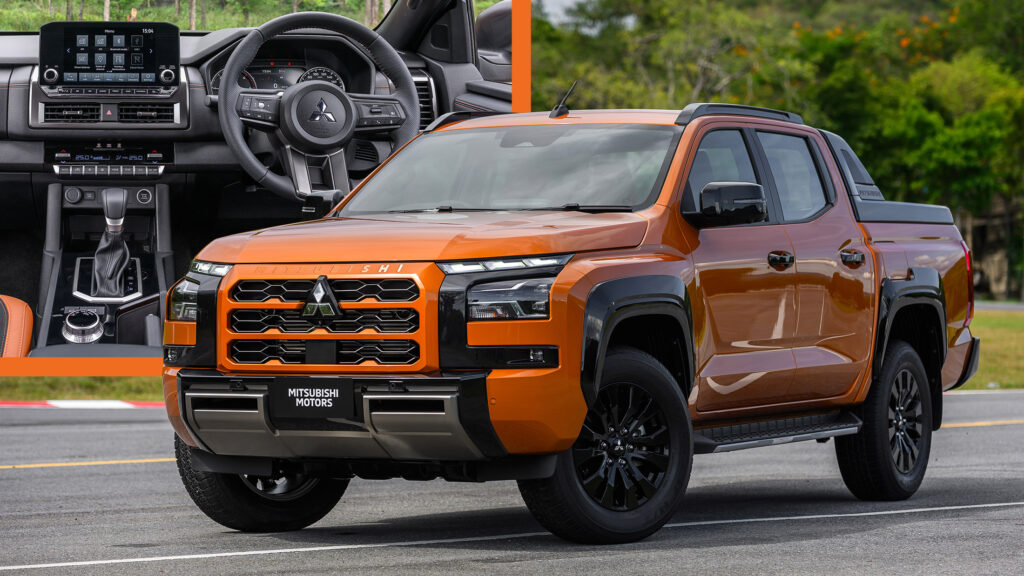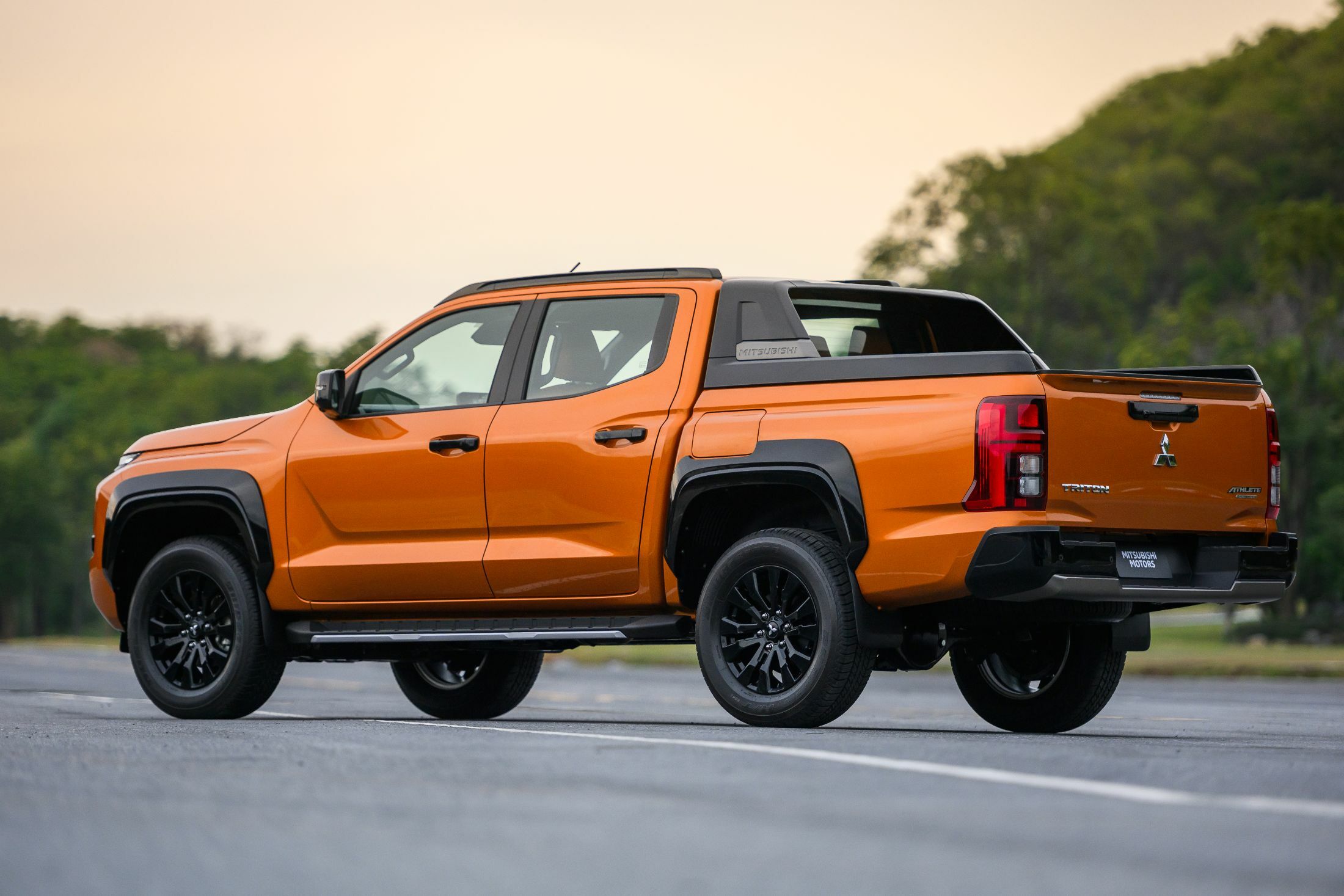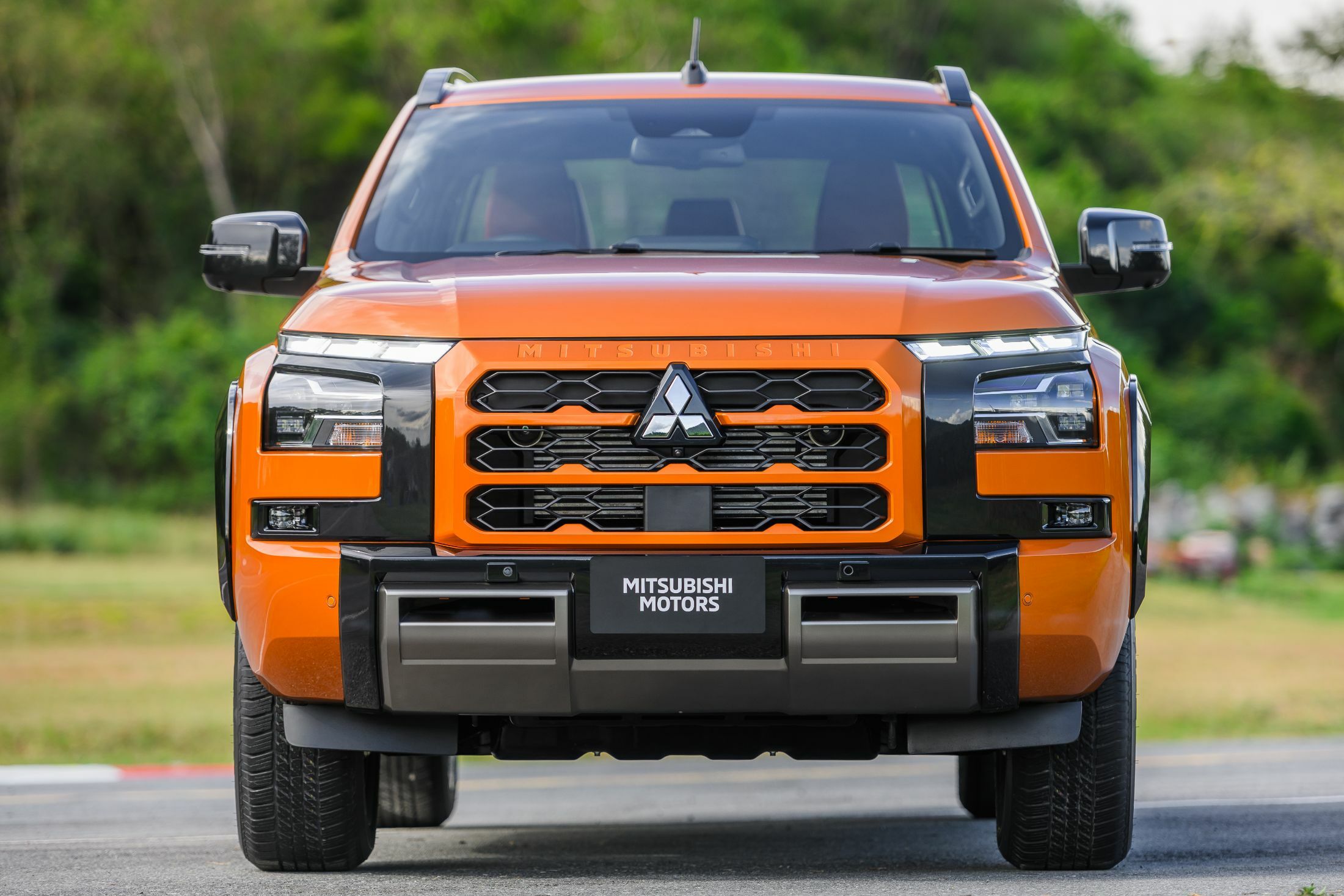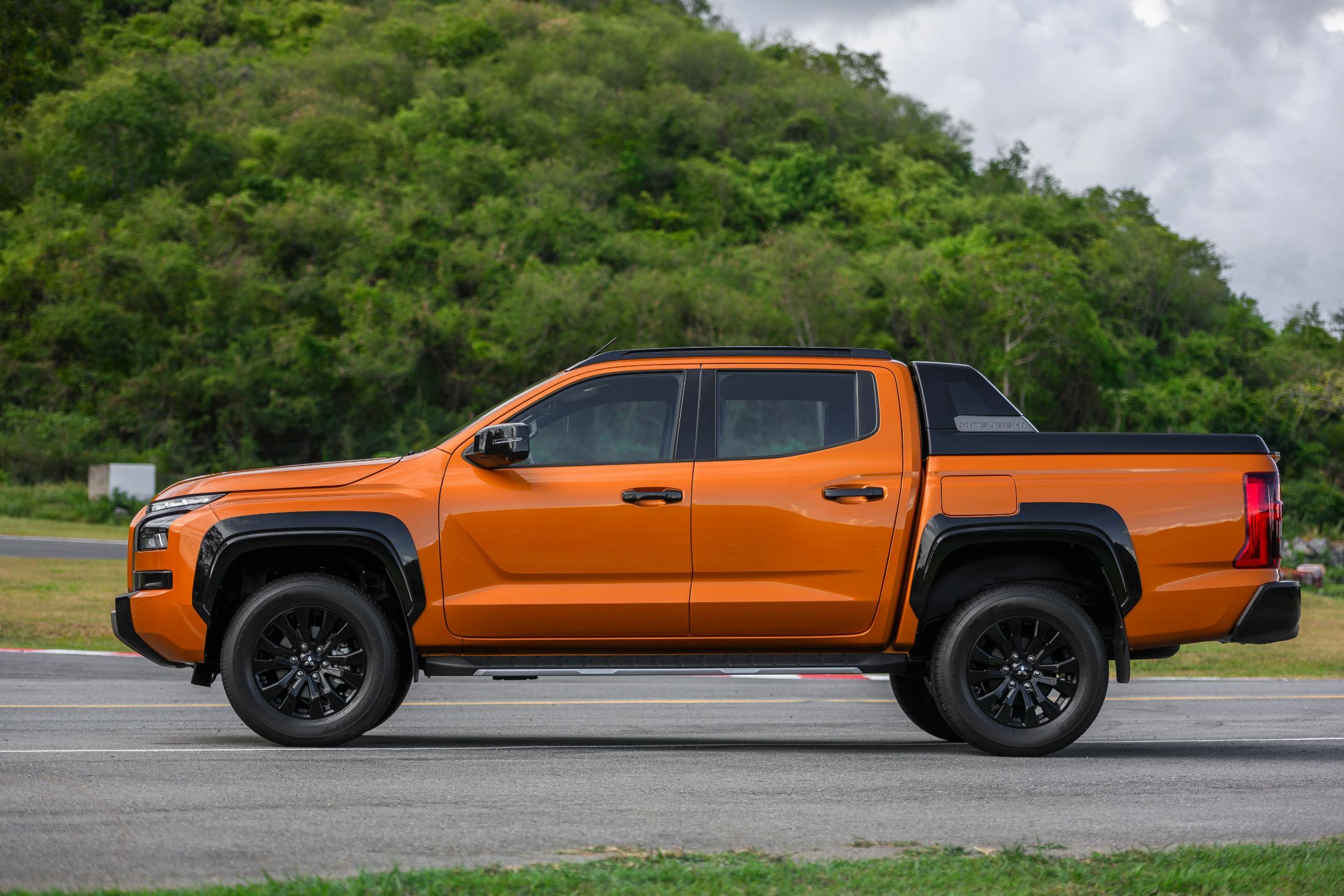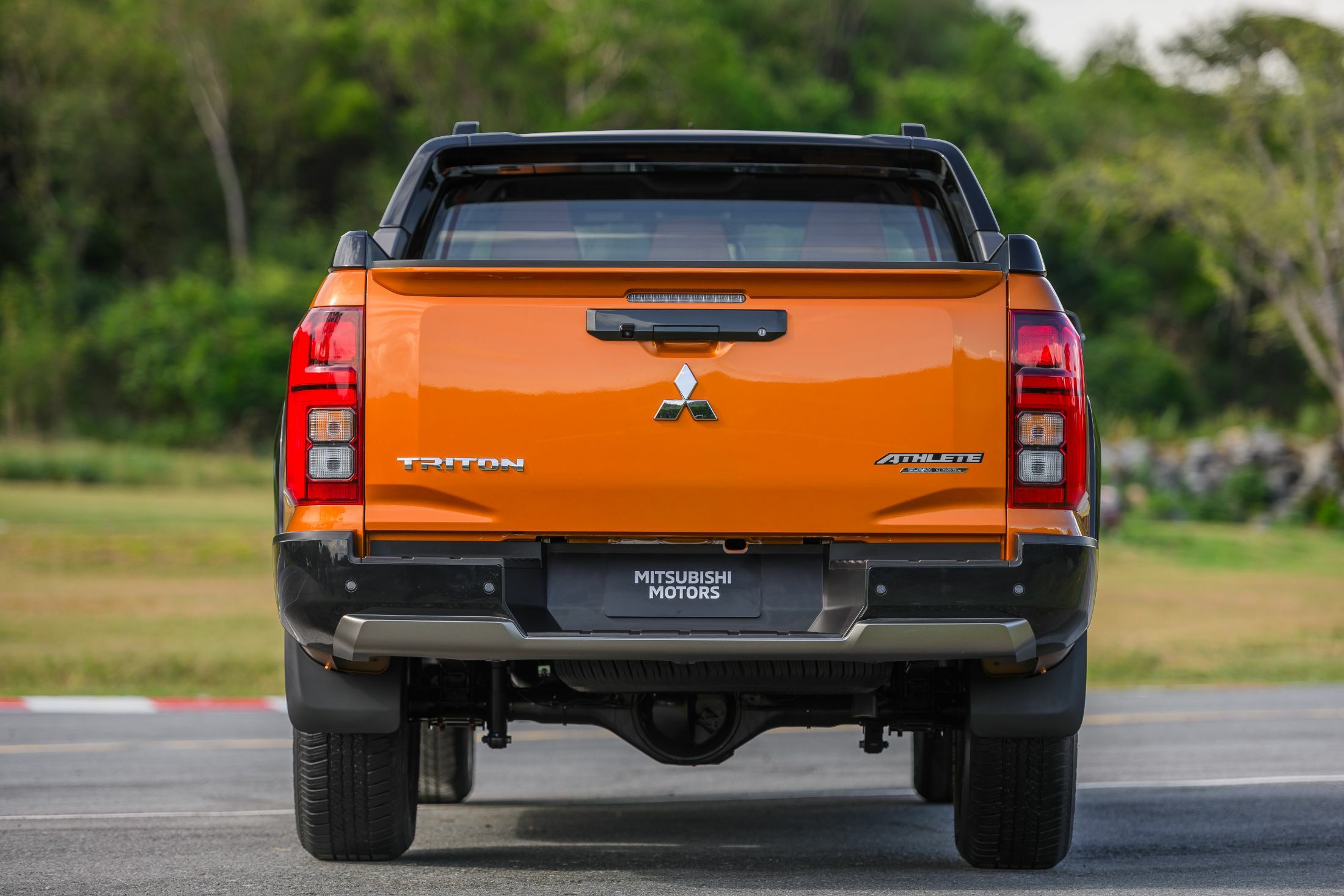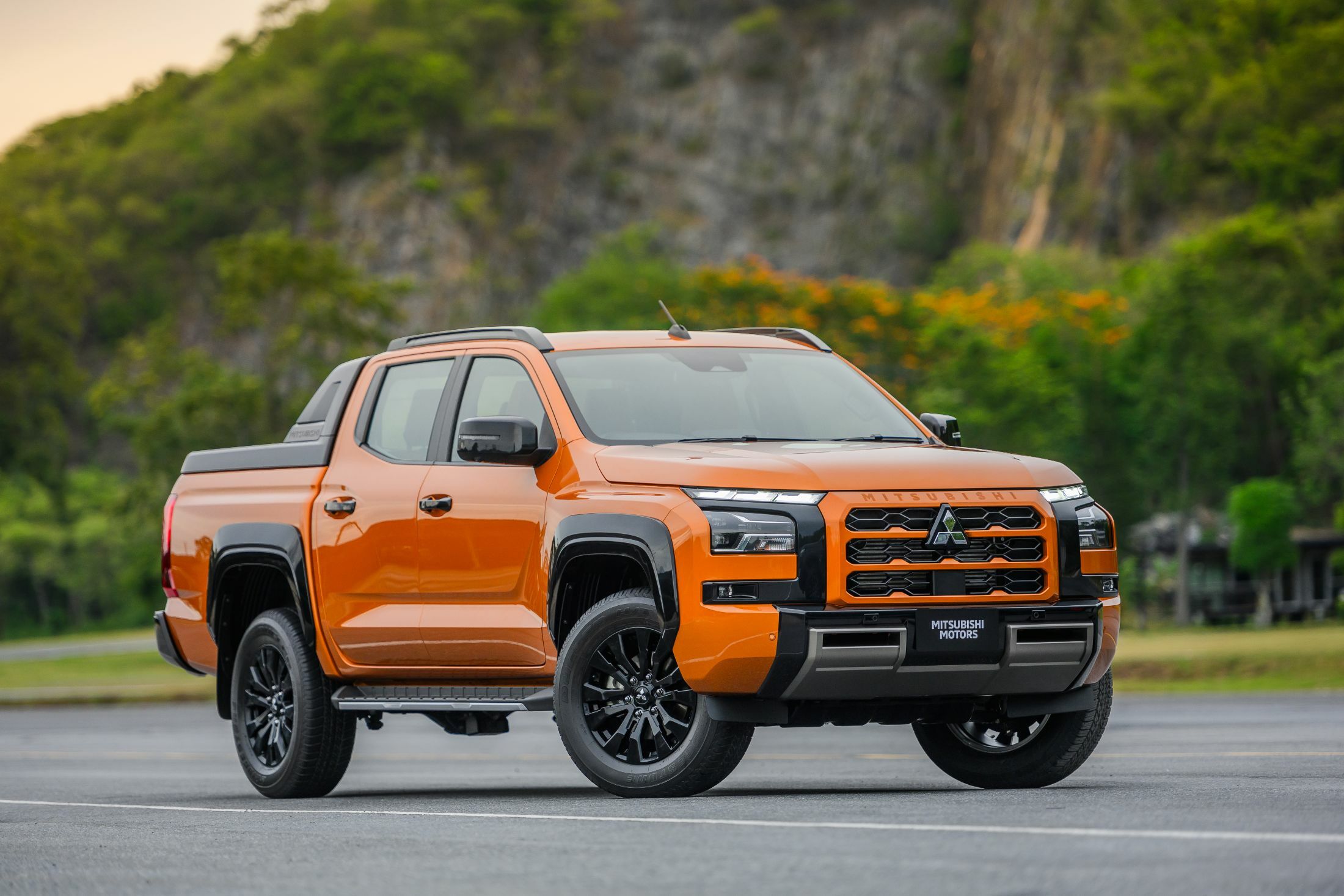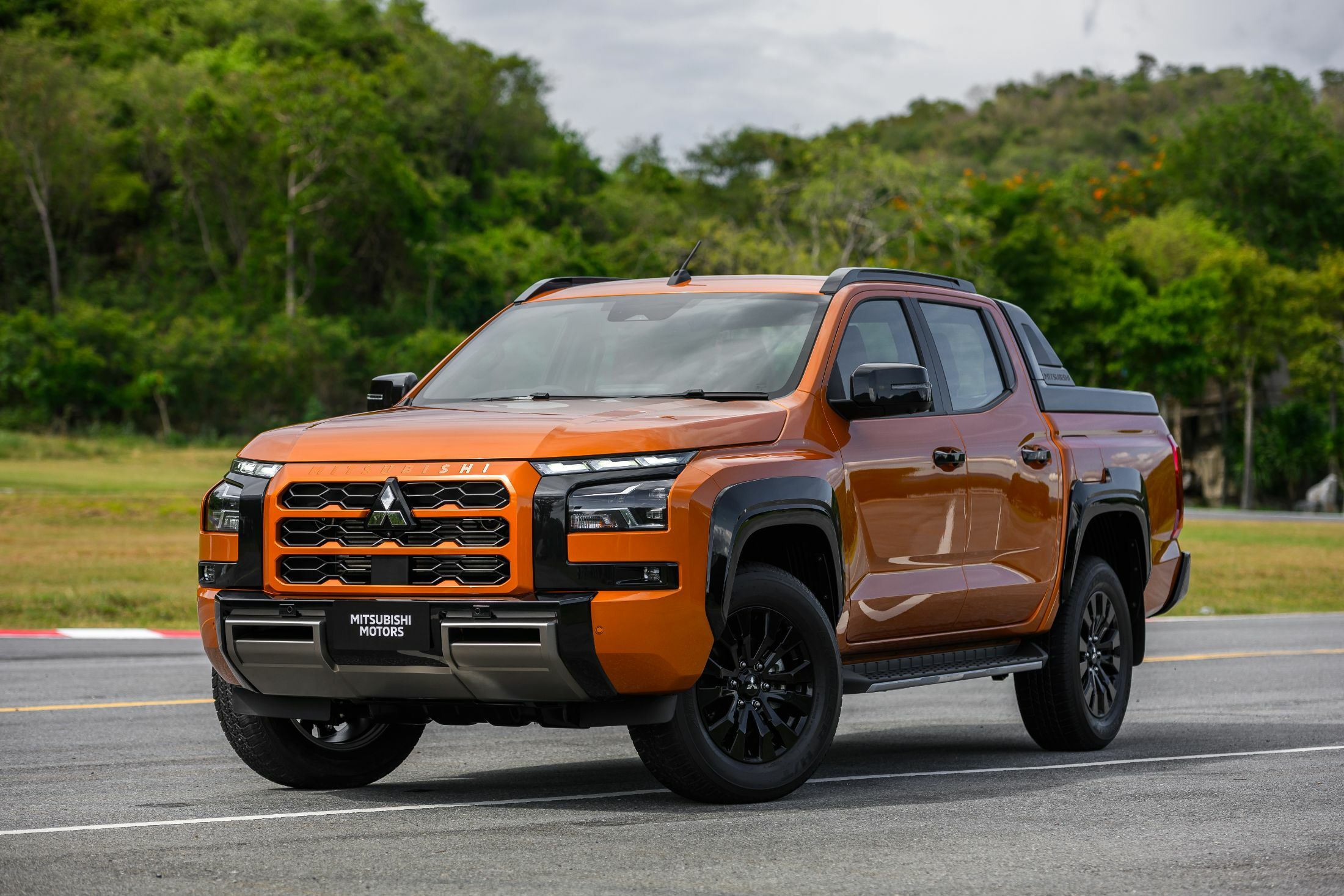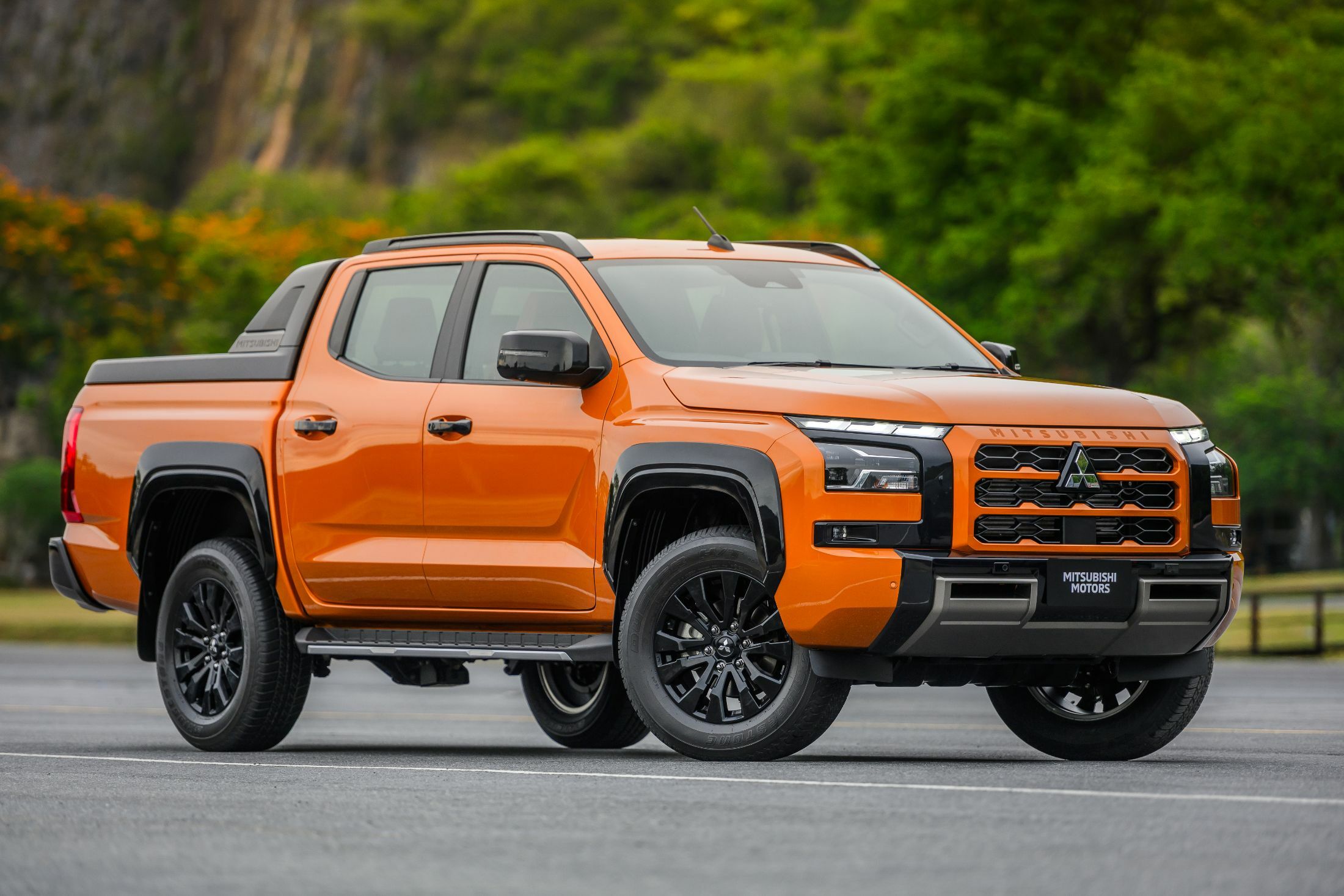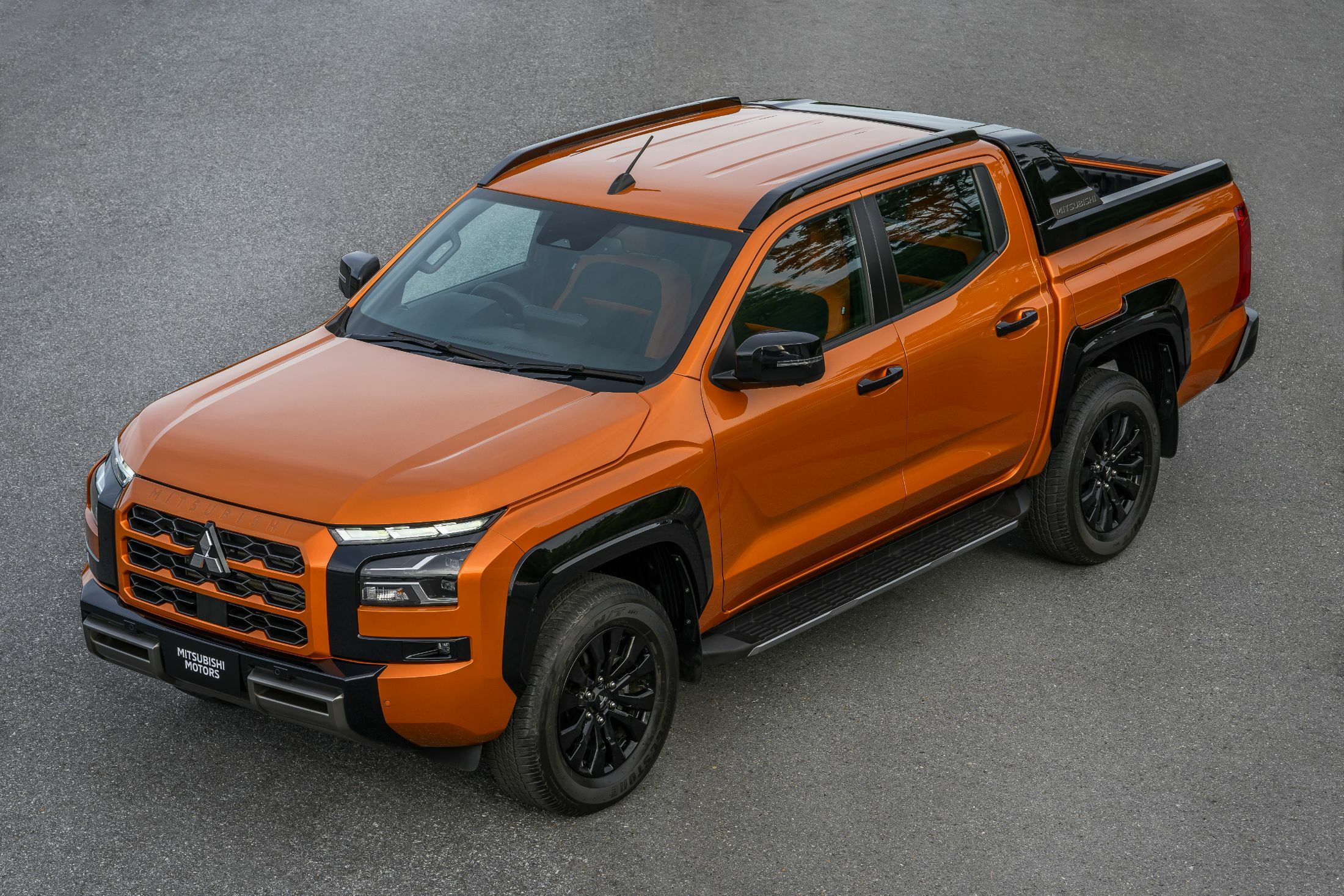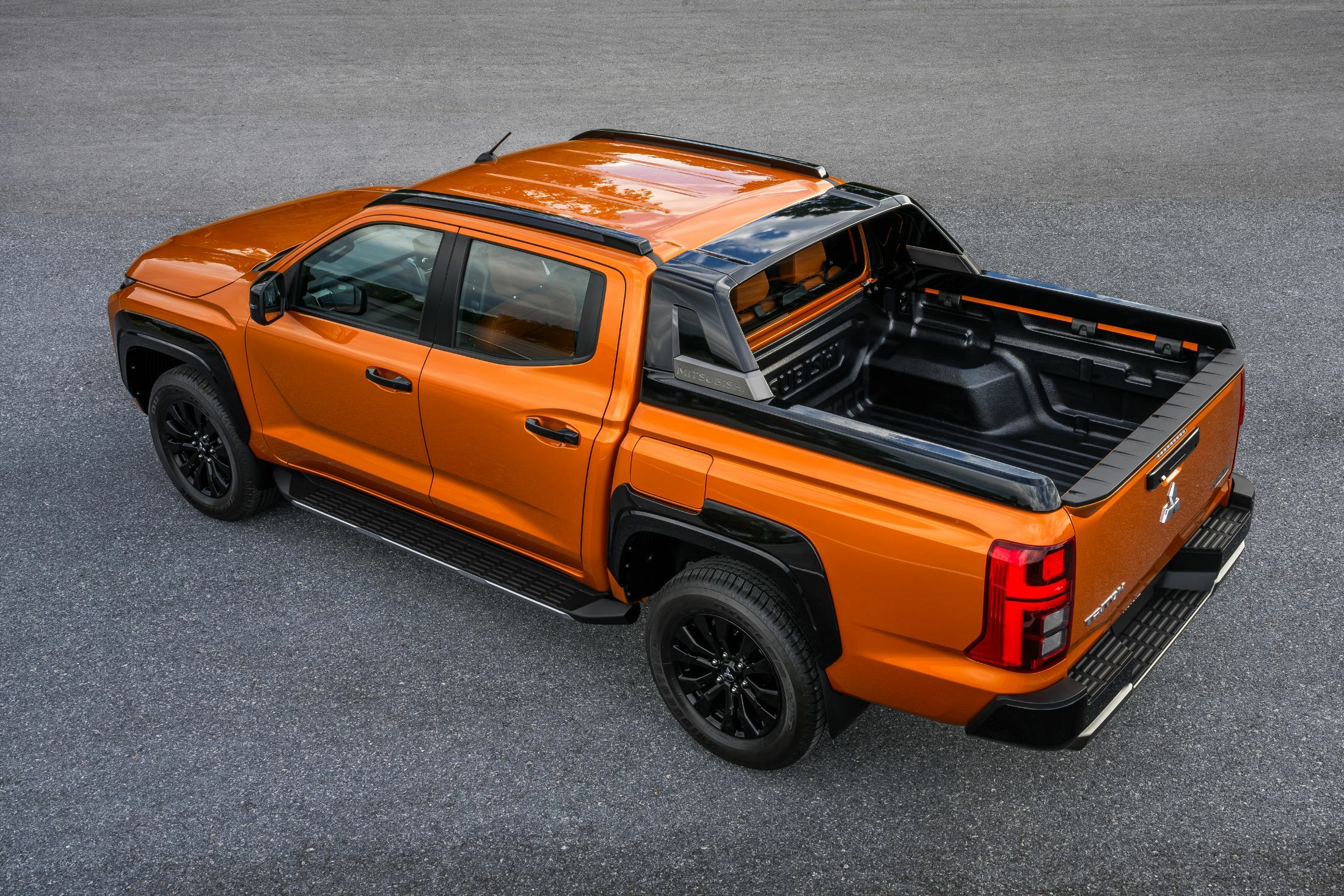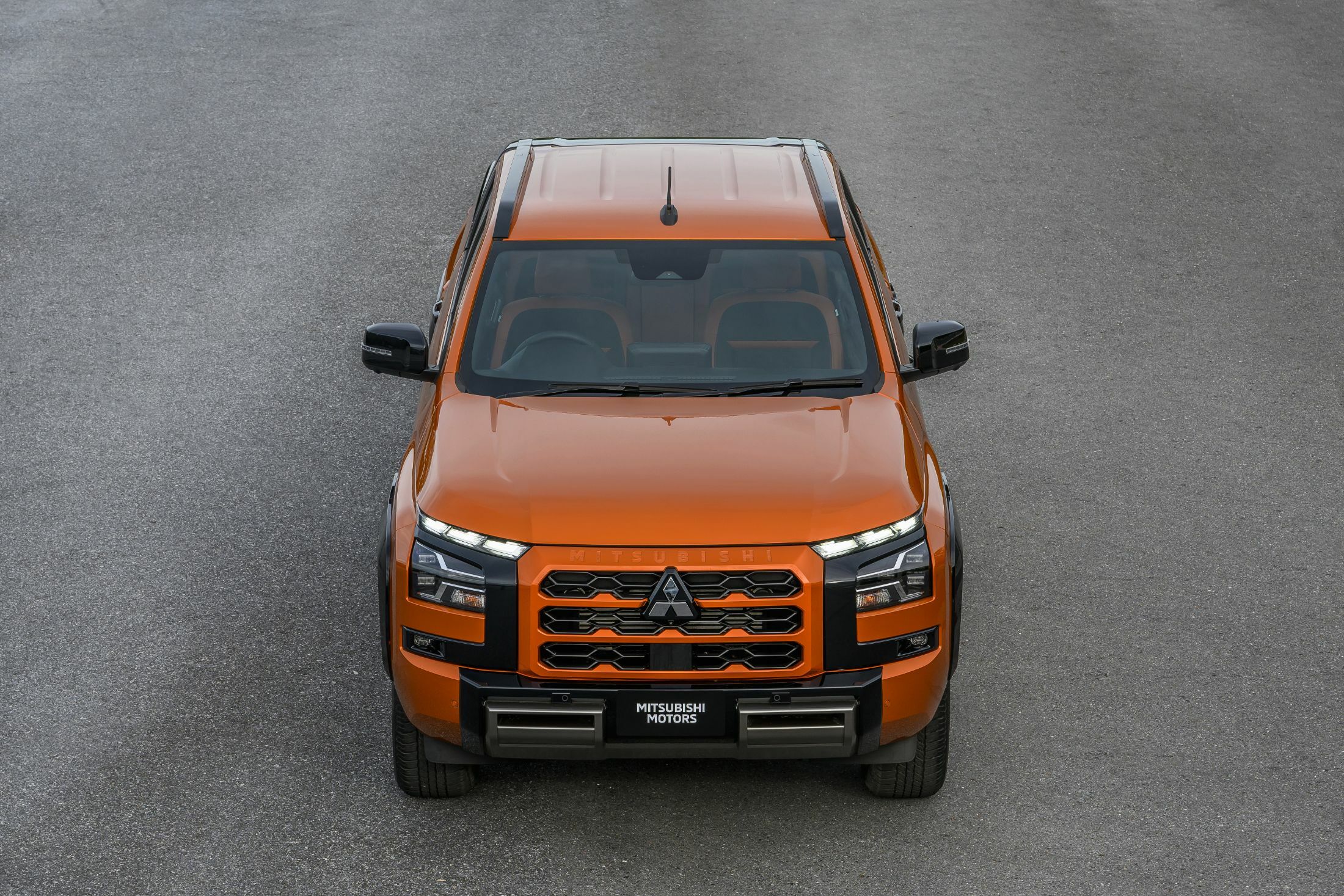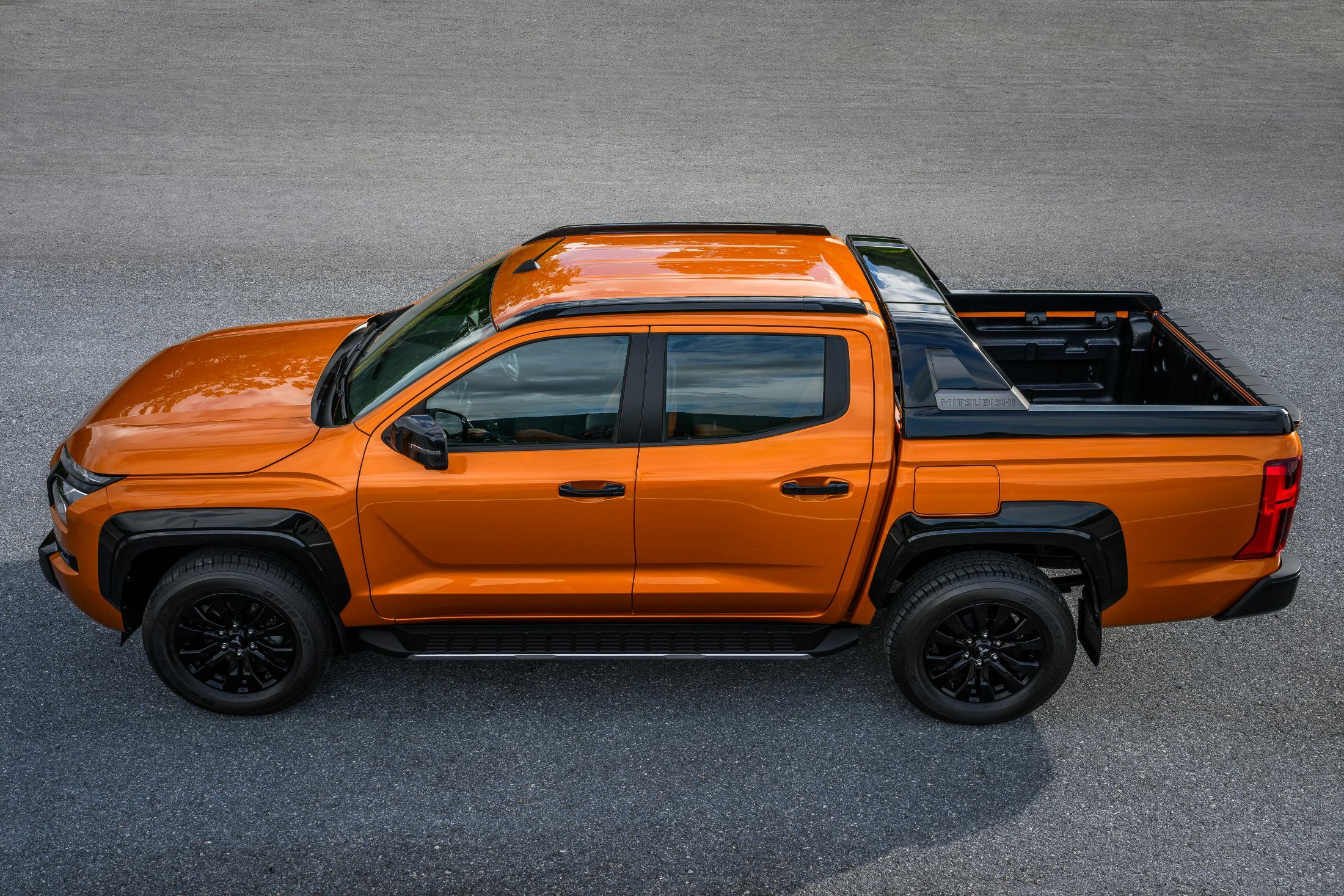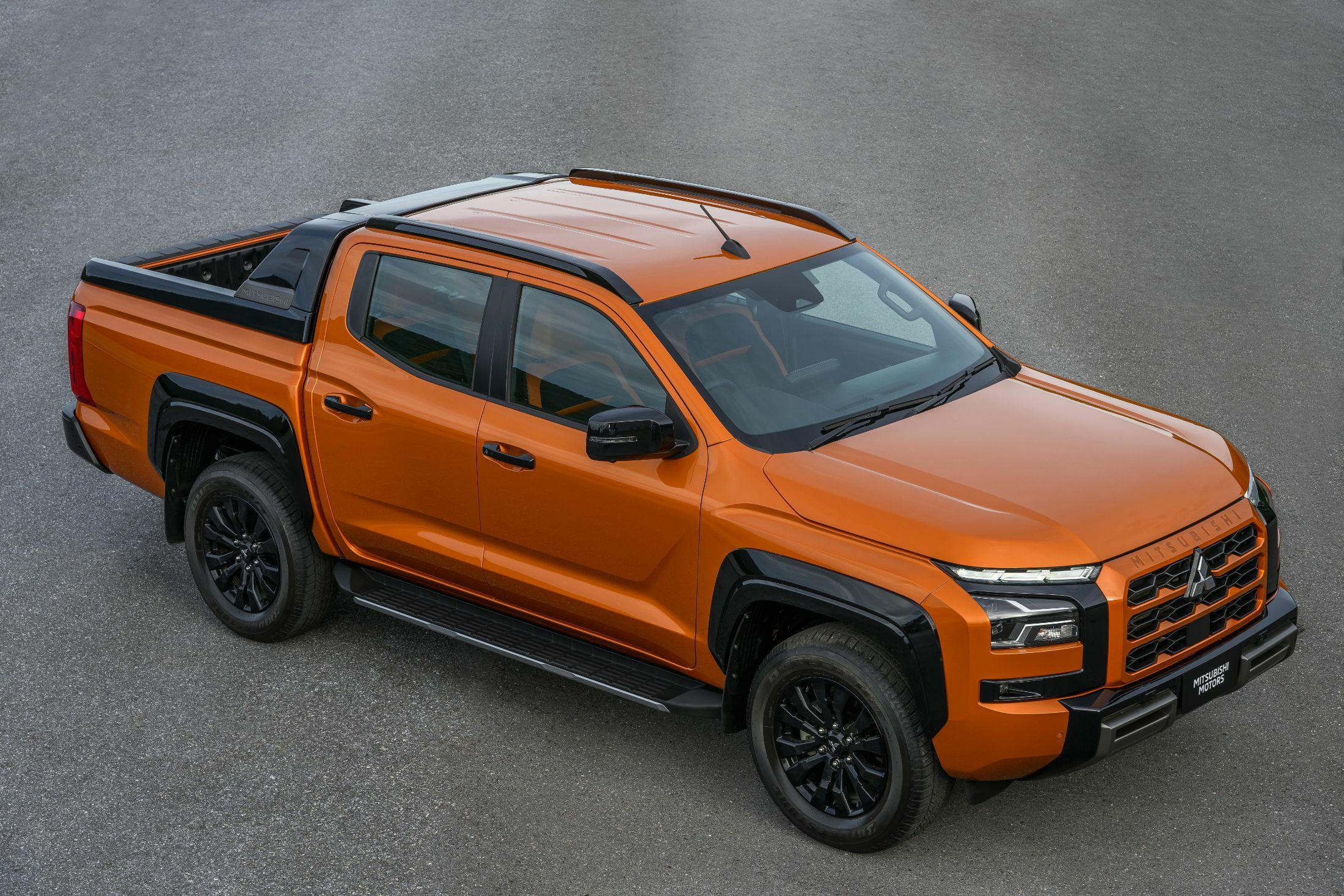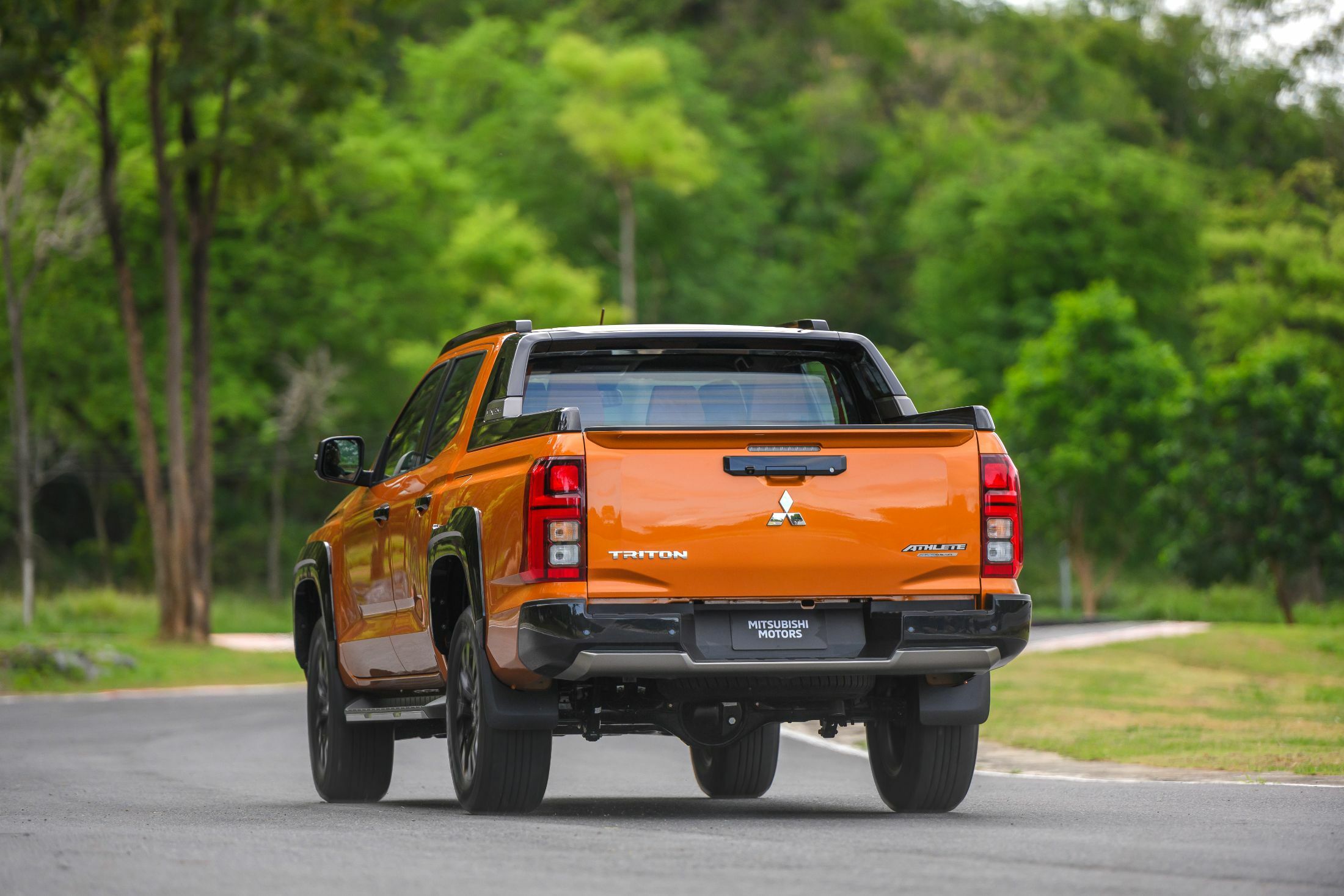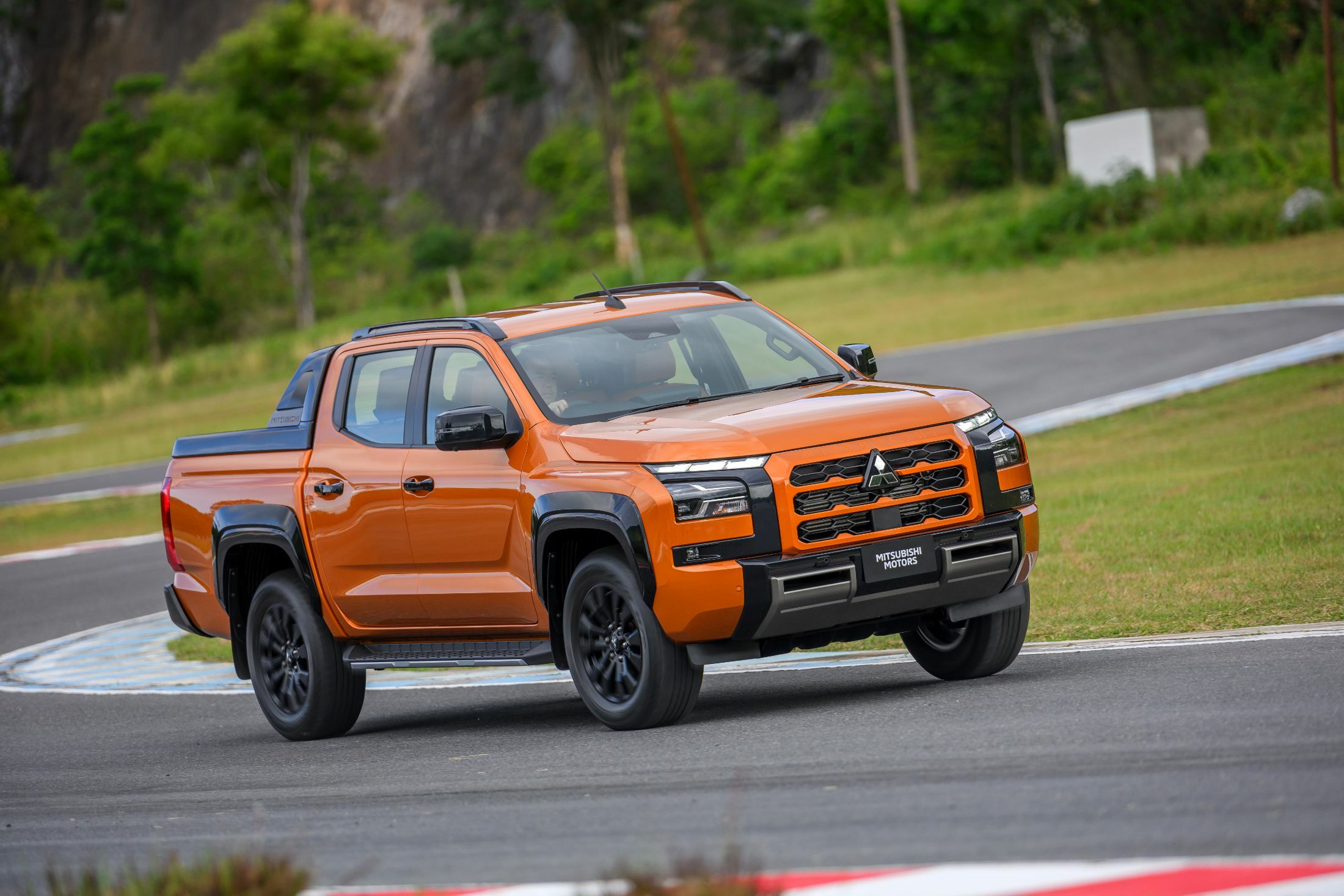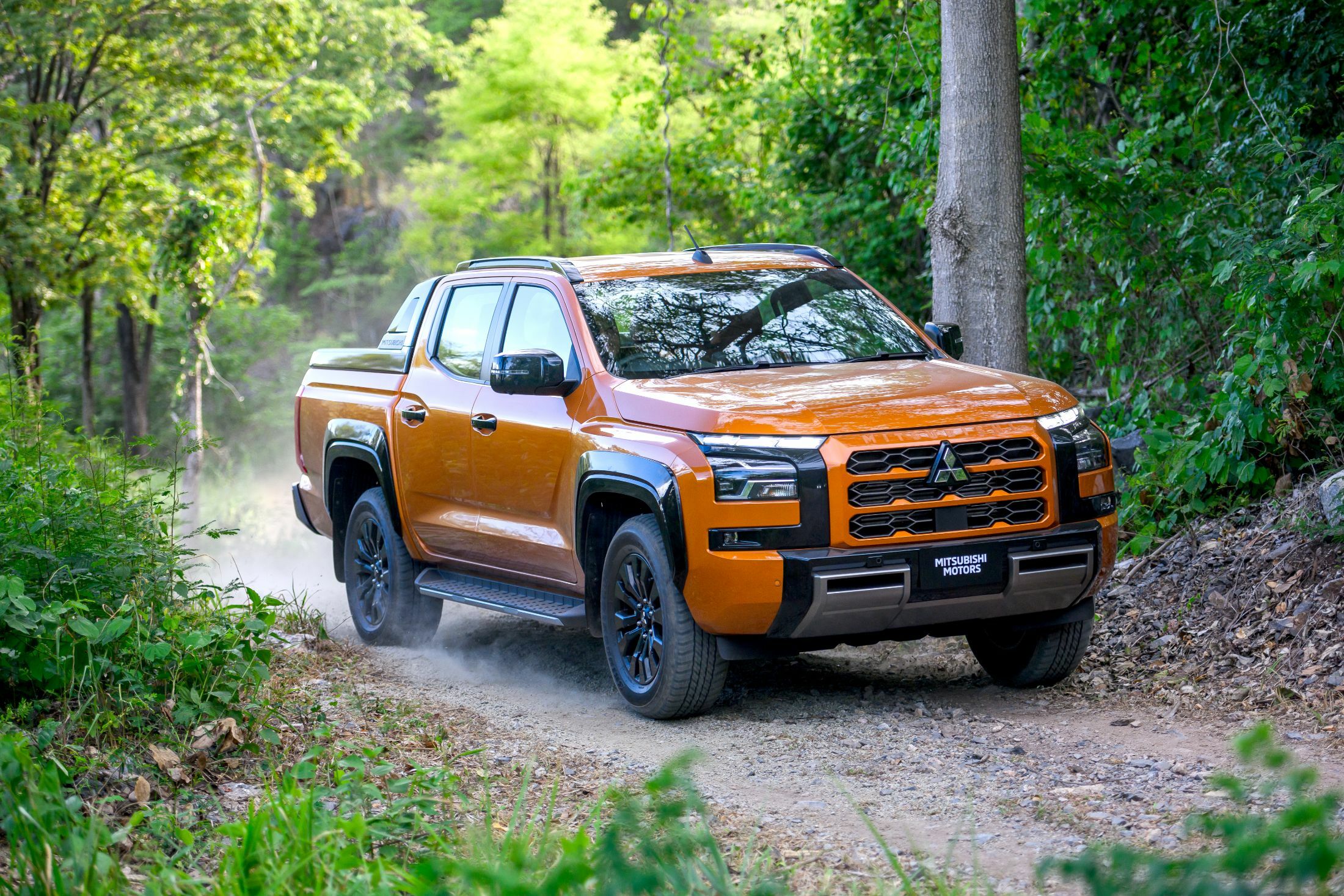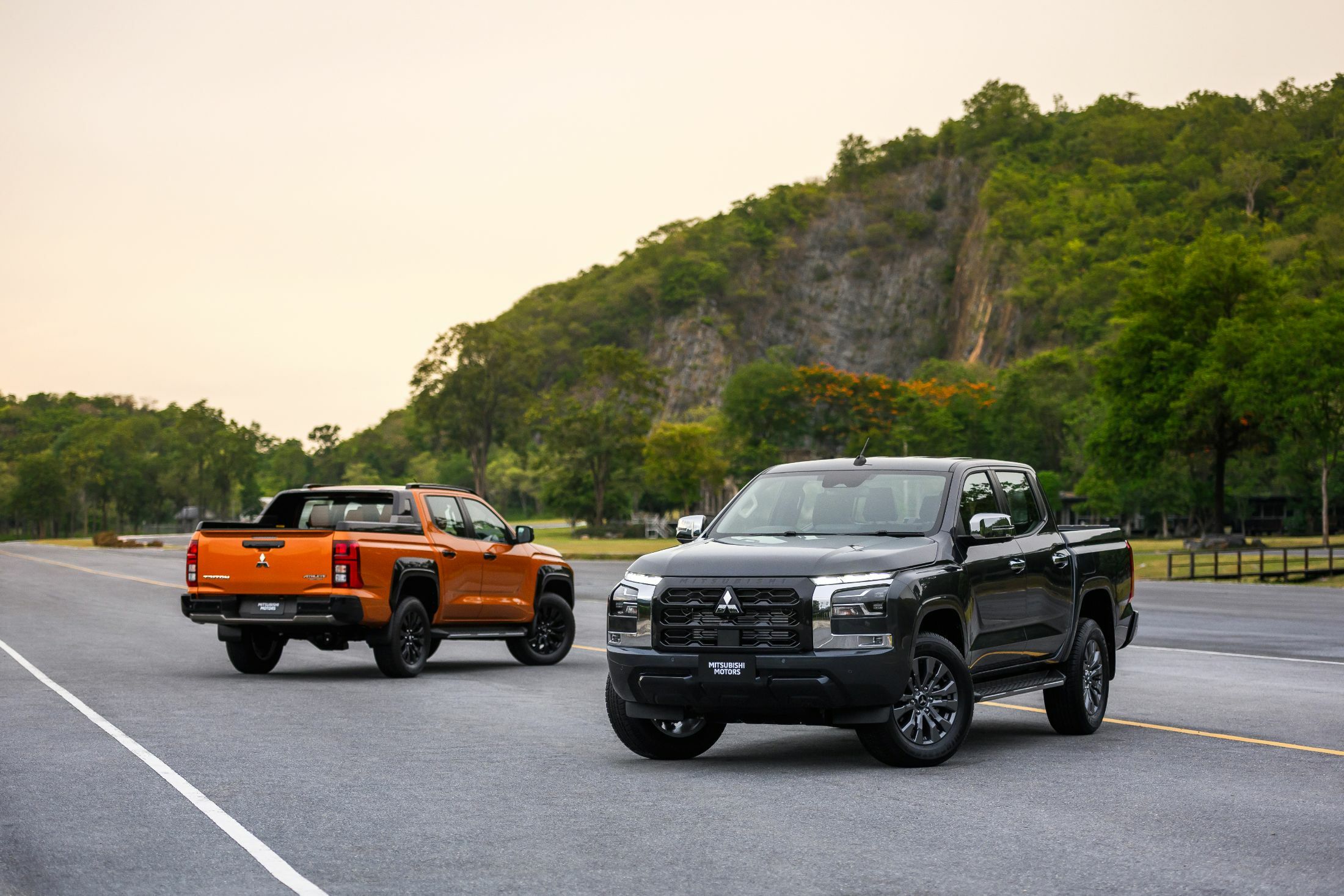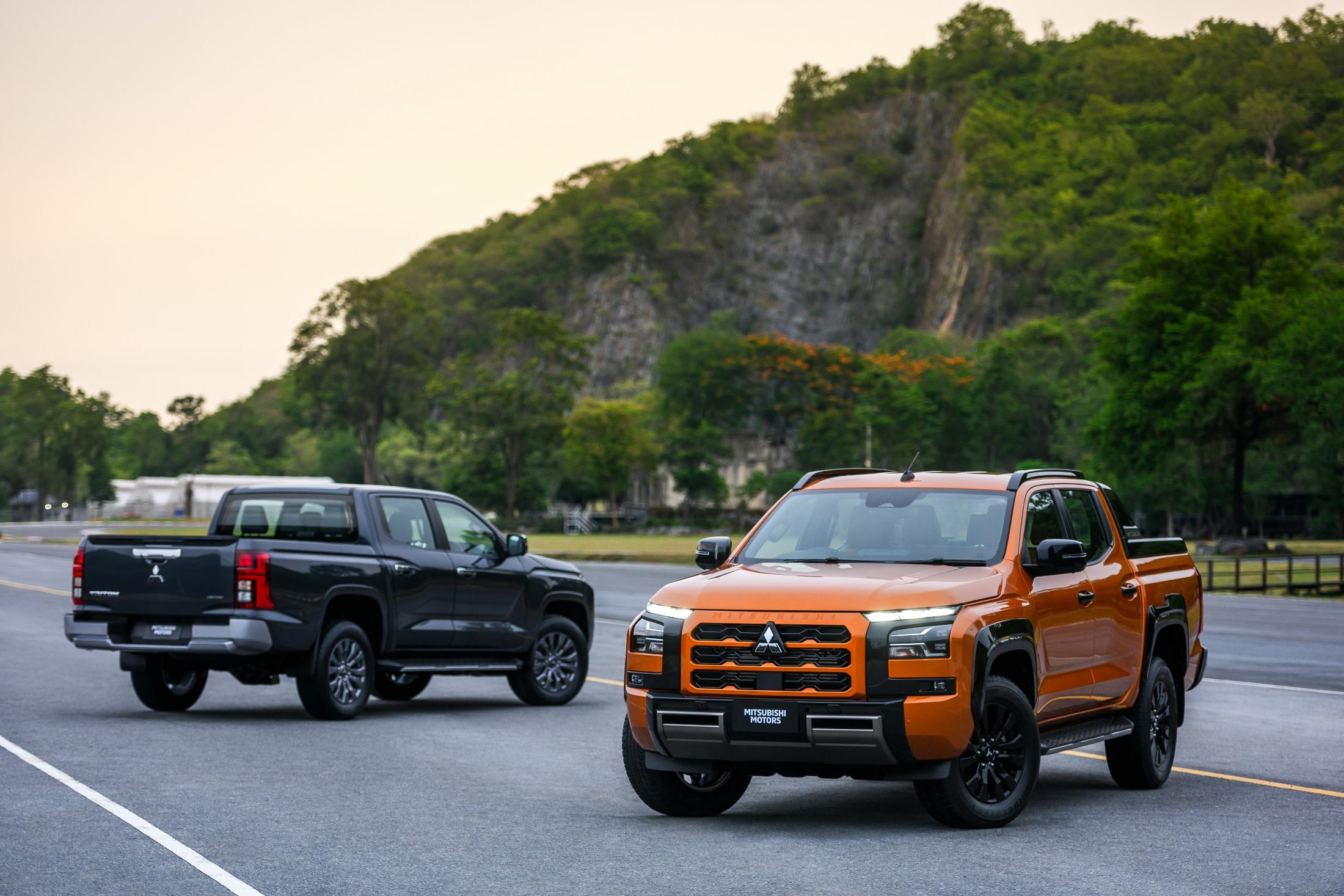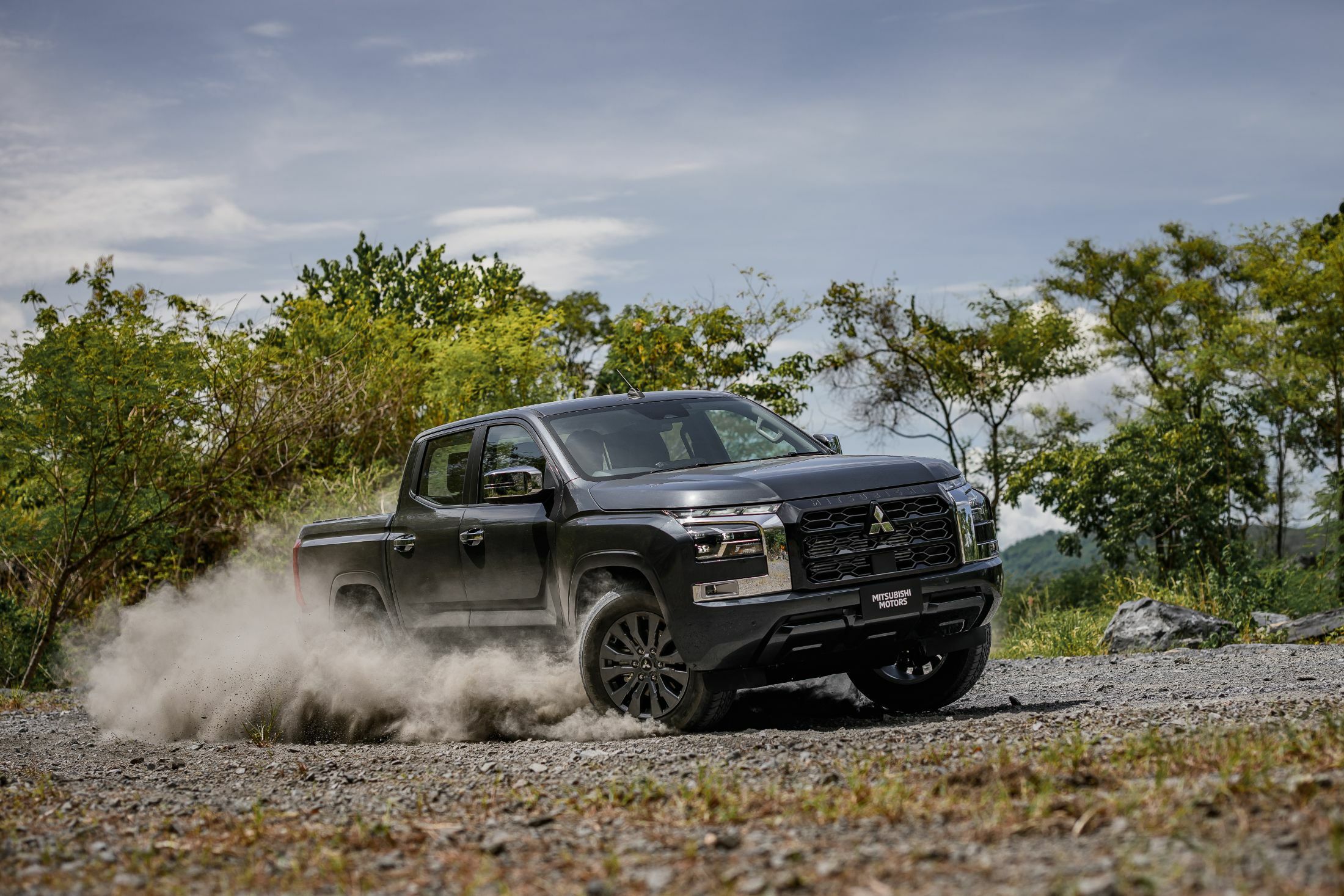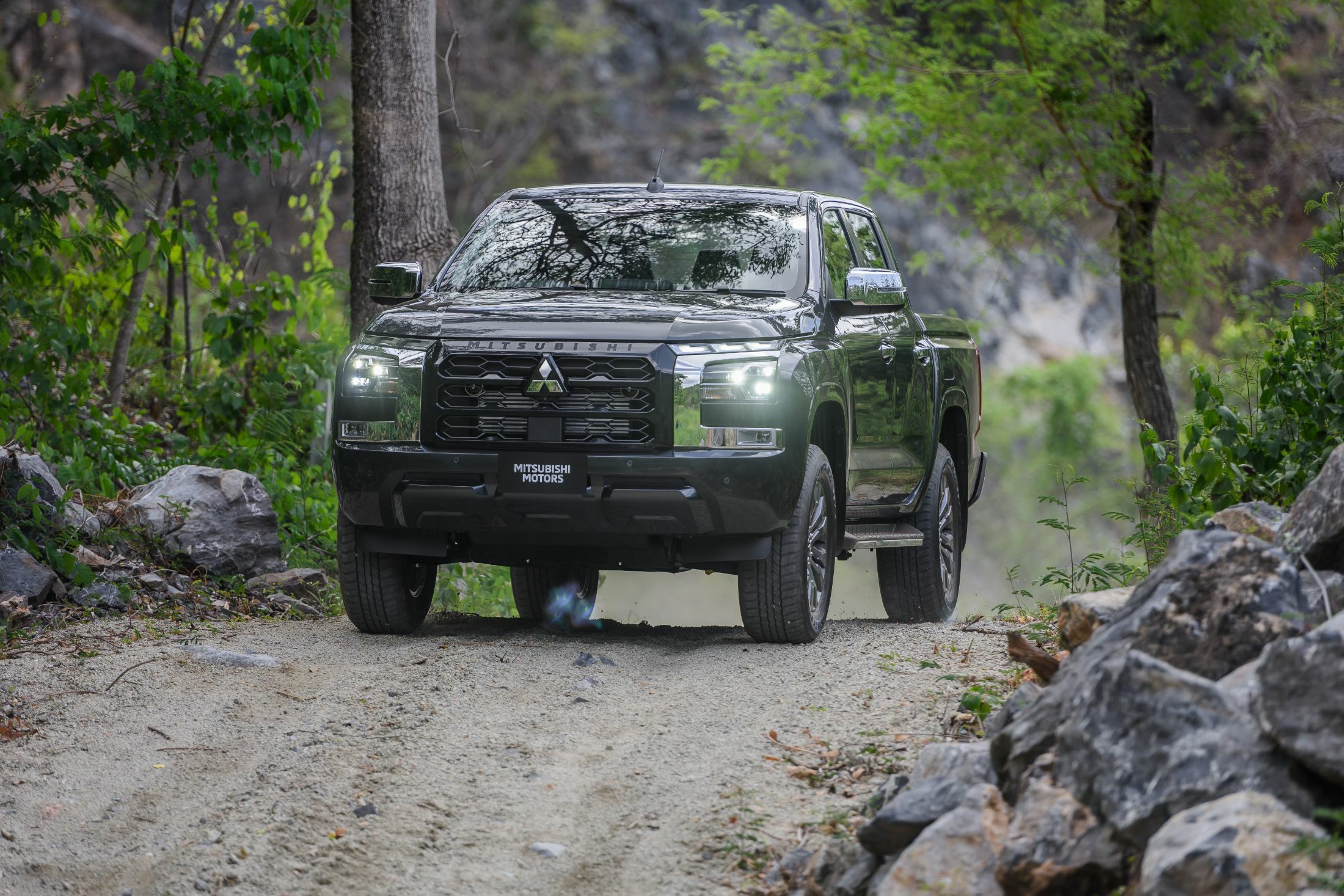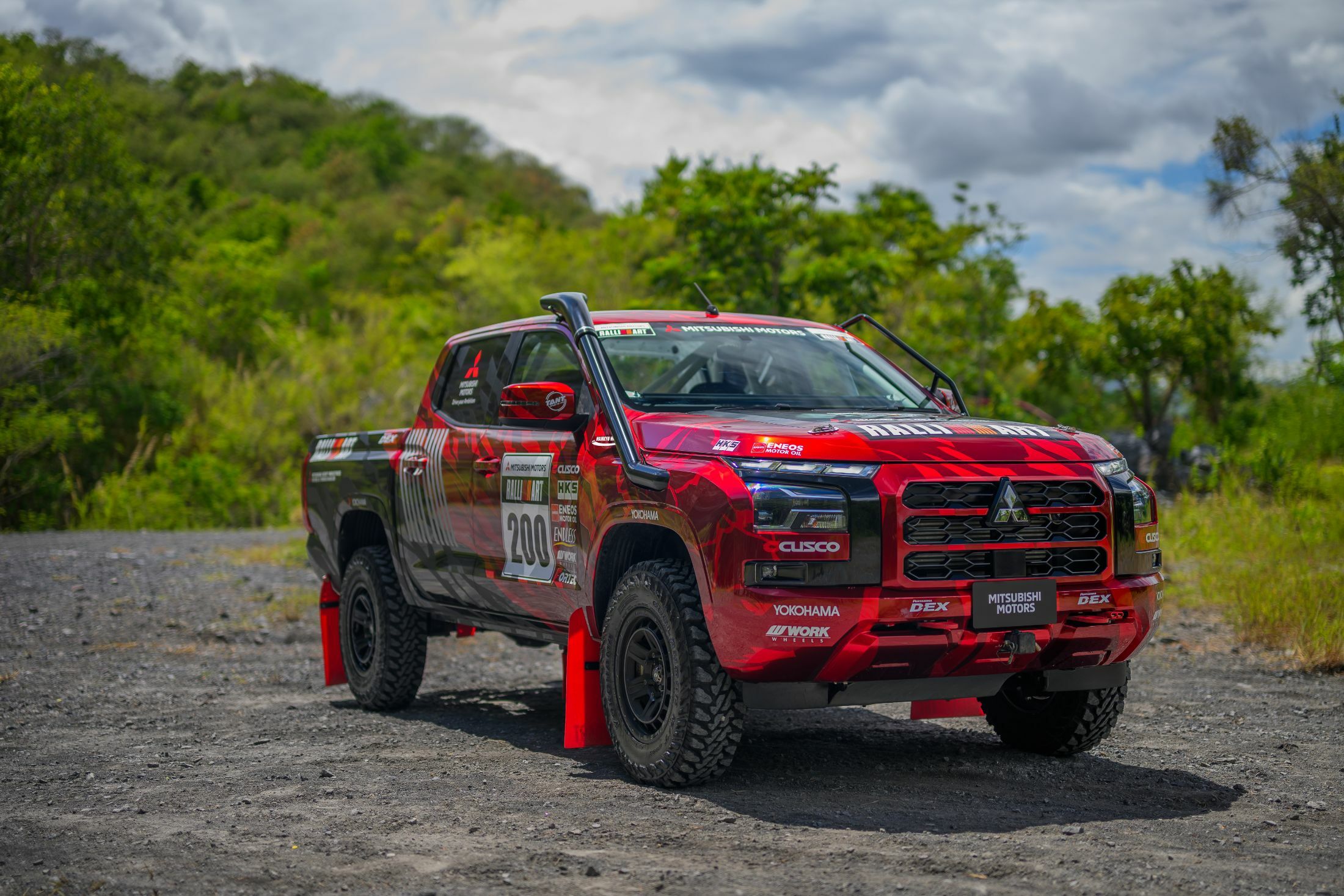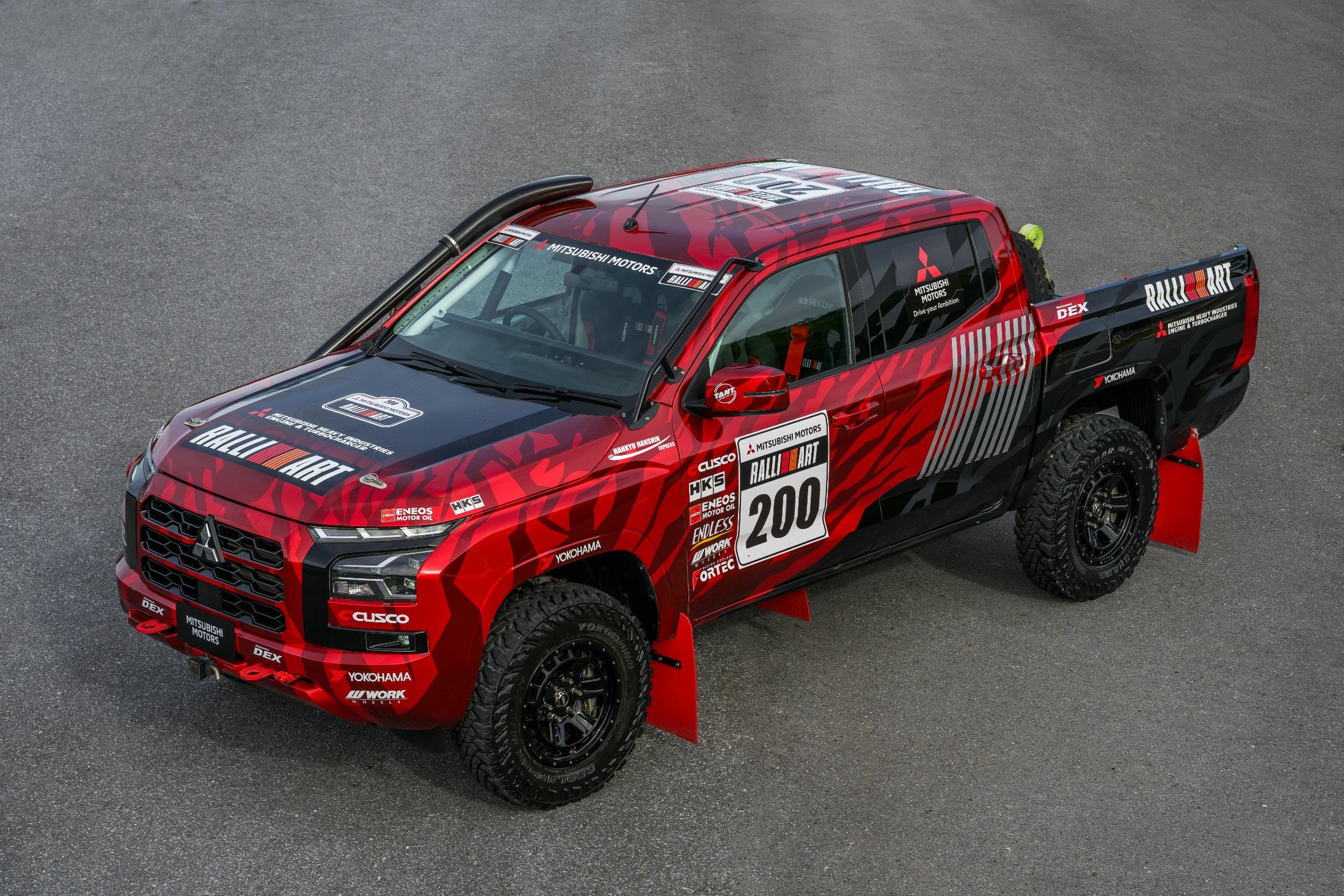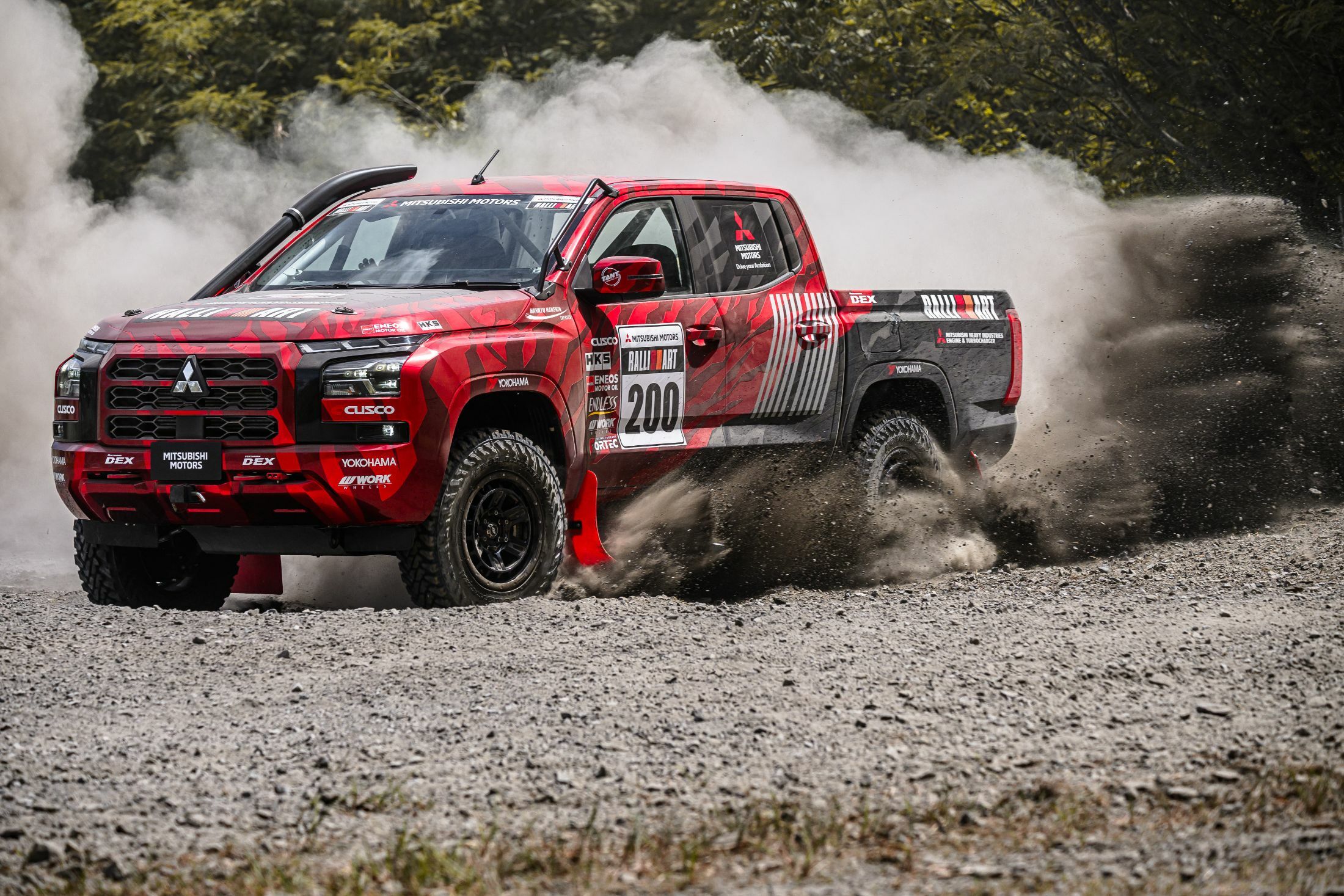Mitsubishi has unveiled the sixth generation of its popular Triton midsize pickup, which is also marketed as the L200. This new model features a full redesign for the first time in 9 years, aimed at enhancing its competitiveness against rivals like the Ford Ranger and the Toyota Hilux. The rugged bodywork has been slightly enlarged, with a greater emphasis on safety and comfort. Additionally, it features a newly developed ladder frame chassis, suspension, and more powerful turbodiesel engine.
Beast Mode Styling
The new Triton / L200 adopts boxier and more rugged looks compared to its predecessor while retaining some key Mitsubishi features. At the front, the highlight is the larger grille flanked by the split headlights and a more discreet version of Mitsubishi’s Dynamic Shield. The flagship trim features a body-colored grille and black accents instead of chrome. The profile has more sculpted lines above the fenders and a greenhouse that looks very similar to the Nissan Navara, hinting at the relationship between the two pickups. The rear sports larger LED taillights that extend to the profile.
More: Mitsubishi To Launch 16 New Models In Five Years
In terms of practicality, Mitsubishi mentions the larger and more durable door handles, the wider side steps with improved water drainage, a lower cargo bed height of 820 mm (32.3 inches), and sturdy steps integrated on the rear bumper. The exterior design can be further spiced up with an array of optionally available accessories like a sports bar, bed liner, fender extensions, and door garnish.
The new Mitsubishi Triton has grown in every dimension, resulting in a more spacious interior and a larger rear bed compared to the previous generation. Furthermore, the towing capacity has been increased and is now on par with the Ford Ranger, VW Amarok, Isuzu D-Max, and Toyota Hilux rivals.
Moving inside, the Triton looks more like an SUV than a pickup in terms of design and features. The dashboard features horizontal lines, with an Outlander-sourced infotainment display, a screen between the analog instruments, aircraft-style controls, soft-padded materials on the touch points, a wireless charging pad, and storage compartments on the center console. There are also more comfortable front seats with a higher seating position and an upright posture for improved visibility while making ingress and egress easier.
Furthermore, the available Mitsubishi Connect features include remote control of the A/C, headlights, and horn from the user’s smartphone. Safety equipment has also been greatly improved with the ADAS package now featuring Adaptive Cruise Control, Forward Collision Mitigation, Blind Spot Warning, Lane Change Assist, and Rear Cross Traffic Alert among other systems. All trims come standard with Active Stability & Traction Control (ASTC) which is said to improve stability on winding roads.
Newly Developed Underpinnings
The 2.4-liter four-cylinder diesel engine was tuned to reduce friction loss and weight while getting a new variable geometry turbocharger. In the new generation, the mill is available in three different power outputs. The base engine produces 148 hp (110 kW / 150 PS) and 330 Nm (243 lb-ft), the mid-spec makes 181 hp (135 kW / 184 PS) and 430 Nm (317 lb-ft), while the high-output version churns out 201 hp (150 kW / 204 PS) and 470 Nm (347 lb-ft).
Power is transmitted to all four wheels through either a 6-speed manual or 6-speed automatic gearbox. The truck comes equipped with the Easy Select 4WD or the Super Sepect 4WD-II system that features a limited-slip differential in addition to the lockable center differential. Furthermore, the driver has access to the selectable Normal, Eco, Gravel, Snow, Mud, Sand, and Rock drive modes.
The new ladder-frame chassis brings a 40% increase in bending rigidity and 60% increase in torsional rigidity compared to its predecessor, while the weight gains have been kept low thanks to an increased ratio of high-tensile steel, with the same material making the truck’s body lighter than before. Mitsubishi claims that the new chassis and suspension offer “significantly better road performance and ride comfort”.
Mitsubishi has produced around 5.6 million units of pickups in 45 years and has high hopes for the new generation. According to Takao Kato, Mitsubishi president and CEO, production of the new Triton/L200 is expected to reach 200,000 units and it will be sold in over 100 countries. Kato described the new pickup as an “extremely important model” for the brand and as “the first global strategic vehicle to be rolled out at the start of our growth phase“.
Sales of the pickup started in Thailand today, with other markets in the ASEAN and Oceania regions set to follow in the near future. The Triton/L200 will return to the Japanese market for the first time in 12 years starting in early 2024. The company also published photos of the rally-prepped Triton that will be competing with Team Mitsubishi Ralliart in the Asia Cross Country Rally to be held in Thailand and Laos this August.




